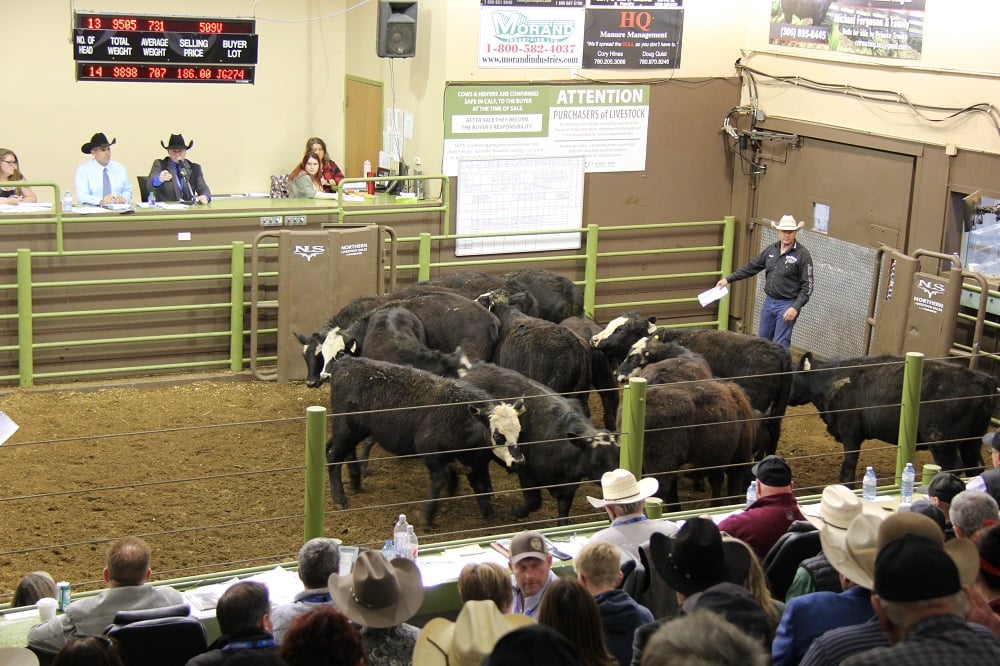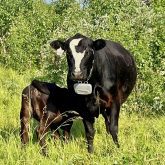Marketing cattle from your ranch is dependent on the pillars of marketing that we learn in ag marketing classes at many of our universities — time, form and place.
Market reports and information help us choose the time of marketing. We can choose the time to negotiate or take a price and a time to deliver our products. The timing of the two does not have to coincide. Futures, options, forward contracts, etc., allow ranchers to establish a price or a price range far in advance of the anticipated delivery date. A good choice of time can make a big difference in your sales proceeds.
The choice of form could be even more important than the choice of time. We have a good number of sale options — weaned calves, yearling steers, open yearling heifers, pregnant yearling heifers, bred cows of various categories, and cull cows of various ages and conditions.
Read Also

Cattle Market Summary
Break-evens, cow and calf prices, plus market summaries courtesy of Canfax and Beef Farmers of Ontario. Cost of Production October…
There are several choices for place. You may direct market from your ranch, use auction yards or use video markets. You may also engage in retained ownership of your livestock by placing them in a feedlot and then market from there, or have the feedlot provide that service. A choice of place could depend on the size of your ranch, your location in relation to marketplaces, what form you are selling, etc.
The changes
When I was a young and new general manager of a fairly large livestock operation, I thought I knew how to market. I wasn’t marketing. I was selling; and, on any given day, we were receiving pretty good prices for that day.
Then I noticed a few good marketers doing some things a little differently. I could see that I had been leaving quite a few dollars on the table.
I began to realize that our production strategies — grazing and animal breeding (genetics and reproduction) — needed to work in synchrony with our marketing strategy.
I soon came to recognize that our calving season, our breeding program which focused on producing females adapted to our environment and our grazing management drove a lot of the economics for our ranch. We changed our calving to be more in sync with nature but out of sync with the common industry market trends. We reduced the need for facilities, equipment and labour at calving time. We also greatly reduced the need for winter feed and associated costs. But now we needed to think of time, form and place in our new marketing decisions.
We had moved our calving from February and March to April. Here are a few things we did to synchronize our production and marketing strategies. As I have shared these ideas with other ranchers, I find that some adopt the idea just as I presented it. Others make some changes or do things a little differently to fit their preferences and circumstances. Look for what might work for you and think beyond the ideas given here:
- We preconditioned all the calves by giving the necessary immunizations, making sure that all were either polled or dehorned, and trained them to eat cake (cubes) from the ground. We trained them by caking them with their dams a few times just before weaning (three to five times spaced three to seven days between feedings). They quickly learn to do what they see Mama do.
- The steer calves might be kept to run as summer stockers or they could be sold any time after preconditioning, depending on range condition and prospects of drought. The steer calves gave us flexibility to adjust to both market and rainfall conditions.
- We kept nearly every heifer calf and exposed them to bulls for a very short time (24-30 days). We did sell a few — the ones we were almost ashamed to sell. (Don’t try to tell me you don’t have any of those.)
- The heifers were developed on pasture and fed about three pounds per day of a 15-18 per cent protein cube during the winter and hay when the snow was bad. After breeding, we would preg check as soon as possible and sell the open heifers.
The results
By late summer or early fall, the rate of gain on range pasture had decreased significantly. The open heifers gained well over summer, sold well and were always profitable because the development cost was low.
The pregnant heifers made good cows. We soon learned that the bulls and Mother Nature can more accurately pick the heifers that will breed in the first cycle and likely rebreed after having a first calf than we could.
Because we were exposing the entire heifer calf crop, after a few years into the program we were getting 75-85 per cent of them pregnant in the 24- to 30-day breeding season; we had more pregnant heifers than we needed to replace the cull cows. So, we decided to calve them as two-year-olds and sell enough bred cows to make room for them in the cow herd. They were still gaining value and getting ready to have a calf. A short calving season with first-calf heifers is wonderful.
On the cows, we wanted a short calving season with a long breeding season. Let me explain. We left the bulls in until preg check time sometime in late October. It was easy to remove the bulls then and they were ready to settle down in a bachelor group — we wintered all bulls together. (Up until that time it was much easier to tend the bulls with the cows than in a bull group.) When we preg checked we sorted all the open cows plus any that appeared to have gotten pregnant after September 1. Those cows were taken to rented cornstalk fields. We preg checked them again about mid-December. The ones detected pregnant would calve in June and July. We found a repeat buyer for them.
In the meantime, bulls had been put back with those cows on about Nov. 25 for about 45 days. Those bulls were not going to be used again the next year so were taken from the cornstalks directly to market, which was nearby. The pregnant cows from this later bull exposure would start calving in September. A ranch that was fall calving and raised no replacements bought those cows.
By this time, we had very few open cows and the bred cows sold for a nice premium over the cull cow market. So, we were selling June and July calvers to one buyer and fall calving cows to another buyer, all at a nice premium.
The next spring, the majority of our cows (usually over 85 per cent) would calve in April. Any that hadn’t calved by May 1 were separated for calving and bred to calve in May while the rest of our cows were bred to calve in April. All dry cows were pulled off and sold before mid-July. We would wean the May-born calf and had a repeat buyer for the cows which he bought immediately after being checked pregnant. Naturally, he had the opportunity to sort off any he didn’t like, but there were very few.
This was a large ranch with several large herds. But I think most of what we did would be practical regardless of ranch size.
However, one thing might take a little more imagination or some cow sorting in late summer. We had a “grandma” herd where we collected cows from the other herds at nine years old. We did many interesting things with this herd of old cows to get the most value from those that would be sold in the current year. In August, we would spend two or three early mornings riding in the herd to take out any pairs where the cow was starting to show signs of too much age — bad udder, poor body condition, poor calf, eye problems, or any sign of lameness. We would teach the calves to eat cake from the ground, wean them in September and put them on excellent hay meadow pasture. The calf, with a little cake, would do as well on pasture as a calf on range with Mama. In the meantime, we sold the cow and saved the feed she would have eaten if we had left the calf with her until October. We felt like the cow weighed at least 100 pounds more than she would have in October or November and sold for $10 to $15 per cwt more by selling in early September.
I keep remembering other things we did to sell every “market cow” — not cull cow — to its highest and best potential. Use your imagination and you will think of some, too.
















